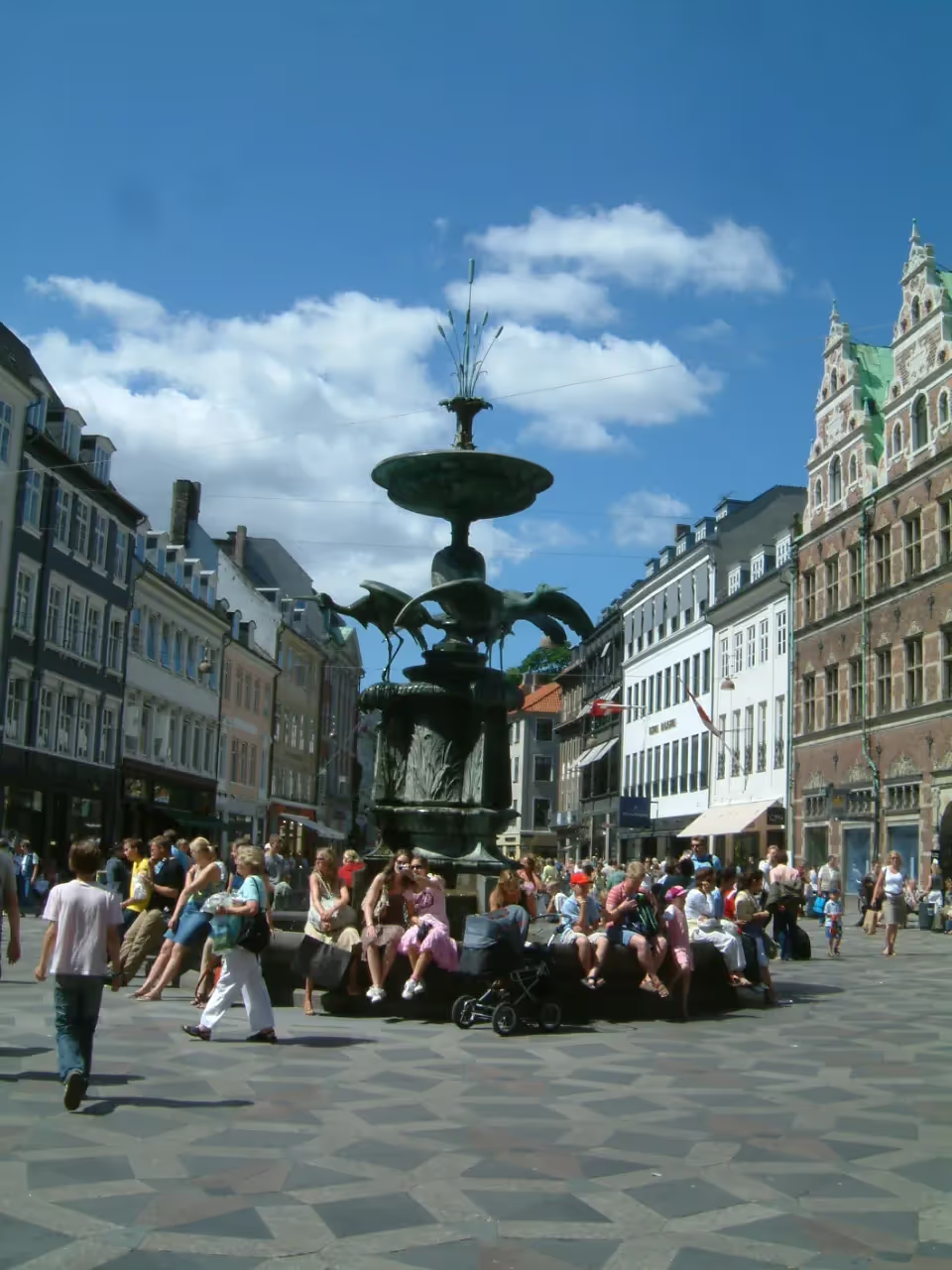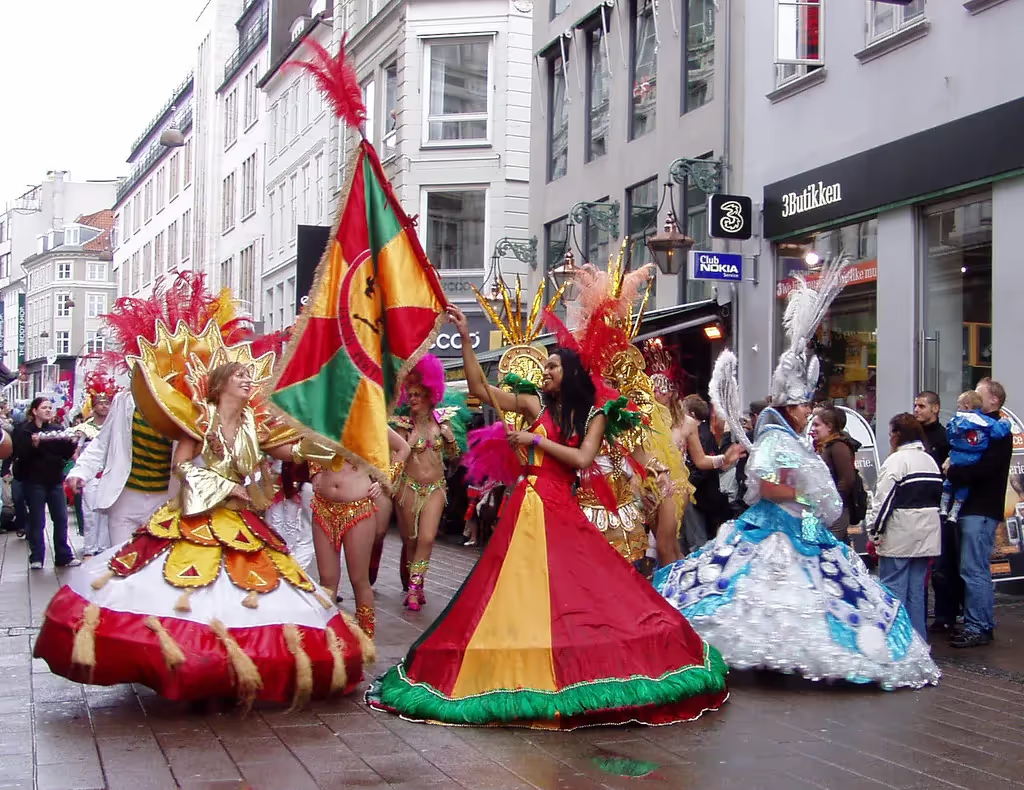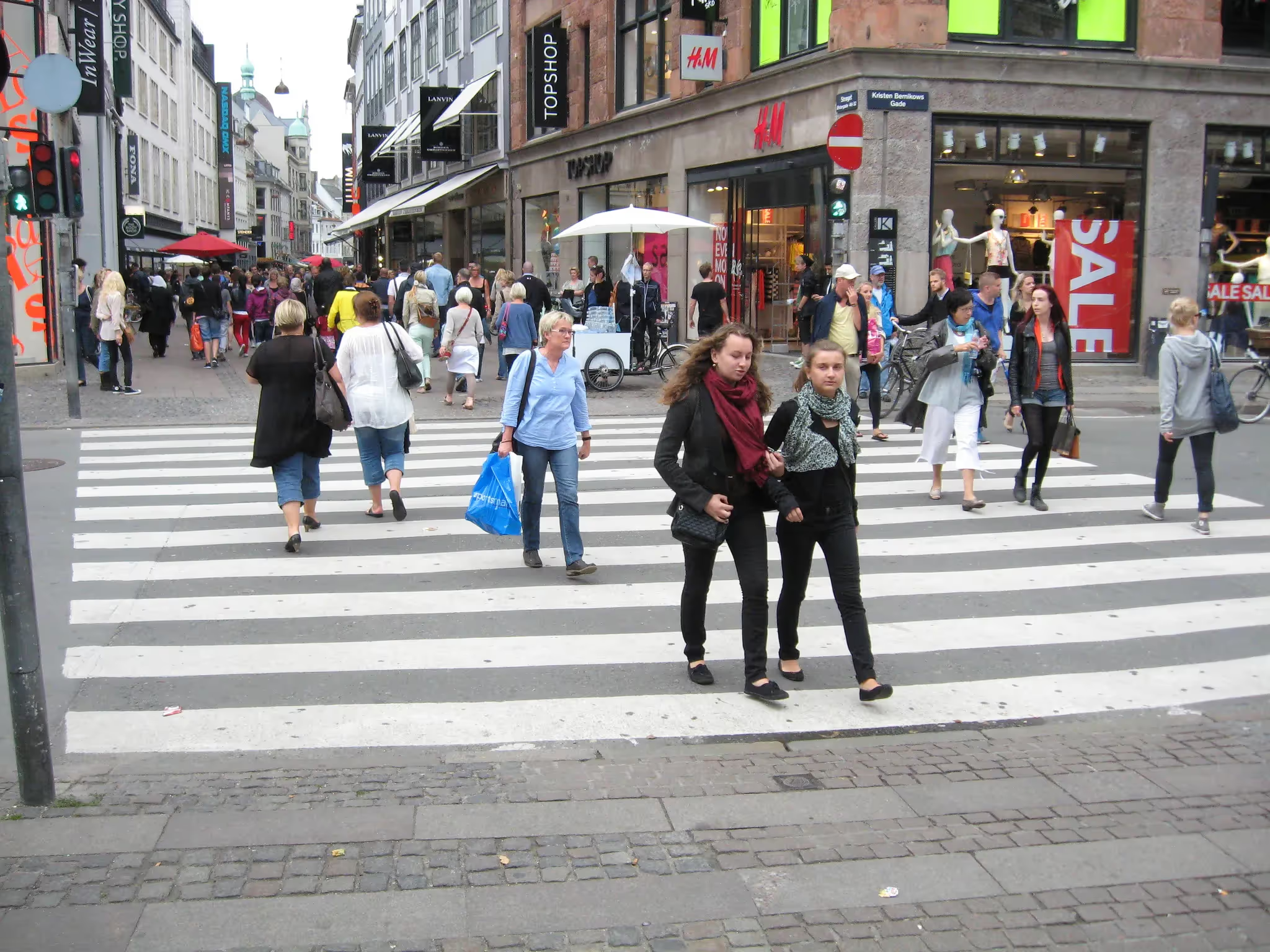A biweekly newsletter with public space news, resources, and opportunities.
A curated dispatch on all things public markets plus the latest announcements from the Market Cities Program.
Please note that these Hall of Shame nominations were written in a moment in time (most over a decade ago) and likely have since changed or even been transformed. If the above entry is now great, or still not so great, go ahead and comment below on how it has evolved or nominate it as a great place.


Other than being a popular shopping destination for tourists, Strøget is also a popular meeting place for locals, or for simply walking to and from nearby destinations like City Hall Square and Kongens Nytorv Square. Its famed landmark, The Stork fountain, is a favorite gathering place for friends and family to enjoy an afternoon meal, and there is a convenient bike parking area for the millions of cyclists in the city. From mid-November through December, the fountain is surrounded by the numerous stalls of the city’s annual Christmas Market. The bustling street is also the site of multiple street performances, parades, and public celebrations throughout the year, and in 2014 it featured a number of free events in conjunction with Copenhagen’s Eurovision Song Contest. The popular and well-maintained street represents a key effort in Copenhagen to strike a better balance between city life and car traffic, and it continues to be a model for cities around the world who are also shifting toward the human-scale approach to street design.
Located in the center of the old city of Copenhagen, which has been labeled the “most liveable city in the world,” Strøget is one of the oldest and longest pedestrian streets in Europe. The 1.1 kilometre thoroughfare spreads out onto a collection of small streets that includes Frederiksberggade, Nygade, Vimmelskaftet, and Østergade. The street was officially pedestrianized in 1964 after several temporary or “trial” closures in the 1950s. Despite the street’s gradual transformation into a more people-friendly space, it took a while for local business owners and those who relied heavily on automobiles to warm up to the idea. Eventually, though, with the revival of public life on the street and increased foot traffic, the pedestrianization of Strøget proved to be a great economic benefit for local businesses. Today, as the main shopping destination in the city, up to 80,000 people traverse the street each day, particularly in the summer. Due in large part to the pedestrianization of Strøget, the center of Copenhagen is now used by three times as many people as in 1962.





*Please note that these Hall of Shame nominations were written in a moment in time (most over a decade ago) and likely have since changed or even been transformed. If the above entry is now great, or still not so great, go ahead and comment below on how it has evolved or nominate it as a great place.